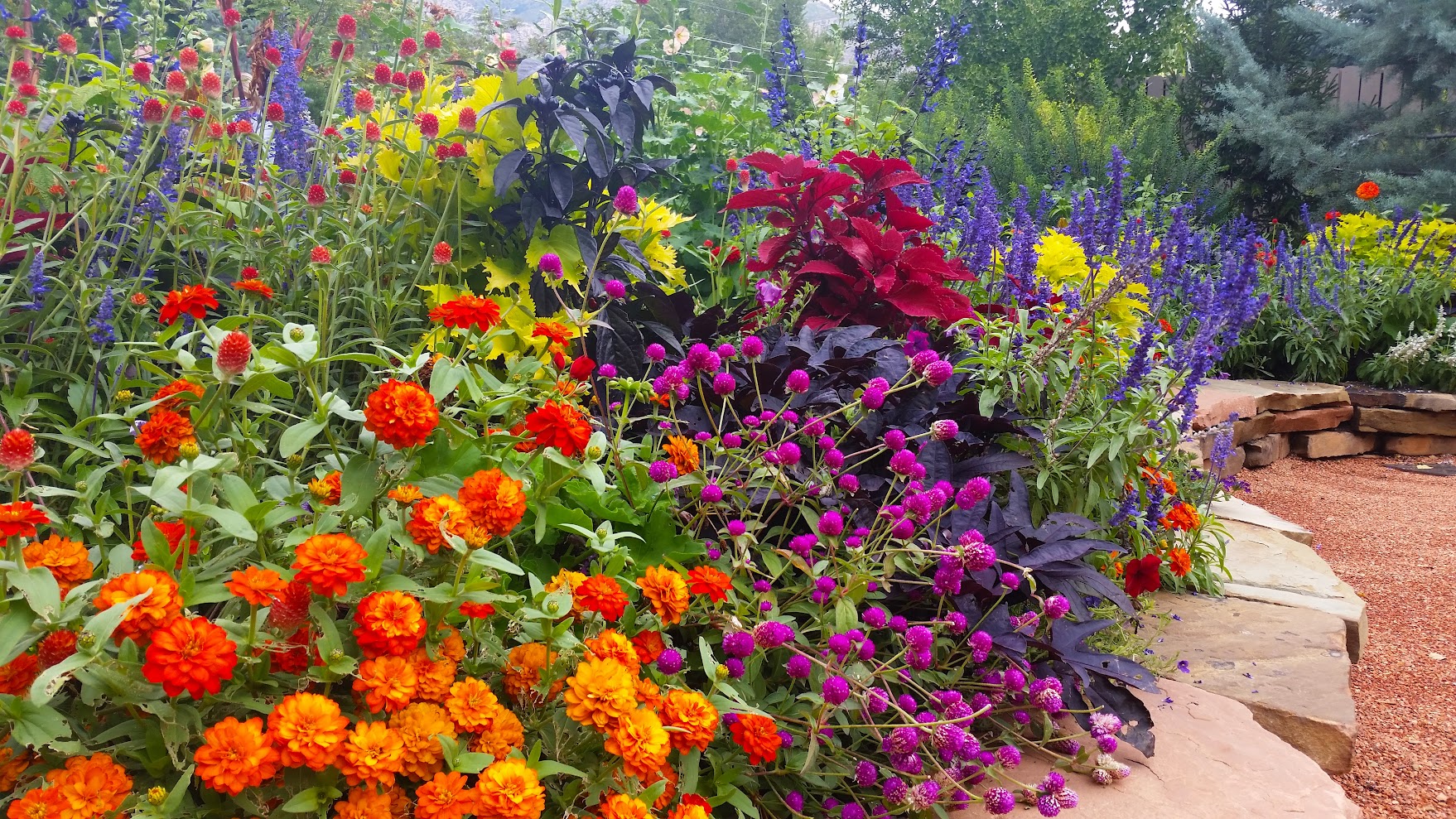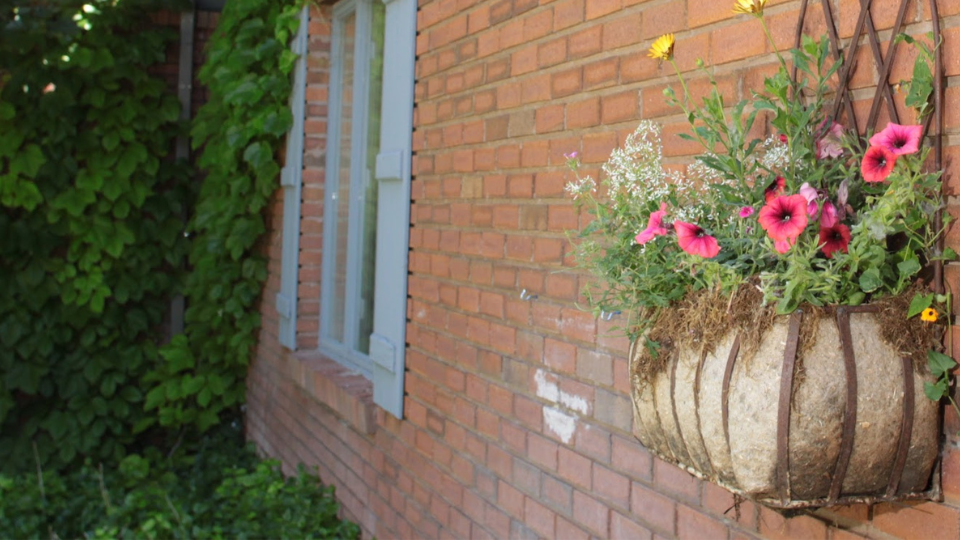Creating Sustainable School and Home Gardens:
Create a Garden Anywhere
Many flowering plants and trees, as well as vegetables, are critical to healthy and biodiverse habitats. Installing a smart foodscape in which you integrate edible plants into an existing landscape is a great way to do just this! The key is to create multiple landscapes in all different places, including containers, indoors in greenhouses, and in your existing landscaping, called forest gardens. You can plant a natural landscape just about anywhere to enhance the existing habitat by providing food for pollinators and other beneficial wildlife. The choices we make are very important and affect the diversity and health of our yards, schools, towns, and world.
Here are three easy things you can do to help encourage beneficial insects:
- Avoid using pesticides—even organic ones. Be careful even using insect repellant on yourself in your yard. Use a roll-on instead of a spray.
- Provide food for pollinators. Plan for plants that bloom at different times of the year. Pollinators need pollen and nectar in all seasons. Try to plant native wildflowers whenever possible. Plant clover, and let dandelions thrive.
- Provide habitat by creating structurally diverse gardens. Grow various, shrubs, grasses, herbs, vegetables, low-growing perennial flowers, and annual flowers. Do not clip off old flower stalks; instead, leave them until spring, as they can provide natural homes for some bees. Provide native bee twig-nesting homes. Grow these things in patches and everywhere possible. Consider a water source. Shallow trays with stones work well as a water source.
Different Types of Gardens

Ideally, you want to have a long season of various blooms in successive waves that are of different heights, sizes, flower types, and colors. Check your local Extension office for recommendations of native plants to use in your landscape.
Raised Beds
When soil is raised aboveground and contained in an area, it is considered a raised bed. Raised beds for gardens can be configured in many ways but are usually 4 feet wide and 4 feet apart so that you can easily work in them without stepping in them. Raised beds improve soil health and reduce weeding. The beds are usually 12 to 18 inches deep but can be as little as 6 inches deep. Raised beds are usually open to the ground below, making them different from a container garden (see additional information on raised beds).
Container Gardens
Just about any container can be a garden! Things to remember are depth for plant roots and sufficient space (leafy veggies, 6–8 inches; root veggies, 8–14 inches, fruiting veggies, 12–16 inches, and wildflowers, 8 inches or more). A good potting mix for soil is recommended, and drainage holes at the bottom of the container are required (3 or 4 holes of ¼ inch each, for example). Remember that containers dry out faster on sunny or windy days; on cloudy damp days, they may not dry out as quickly. Check your containers often before watering. A gentle rain often leaves a container garden relatively dry. Consider some mulch for the top of the soil. Since nutrients leach from your container and are not replenished from the ground, your container garden may require more frequent fertilizing. You can use a finished compost at a rate of 2 parts soil to 1 part compost and/or liquid slow-release fertilizer. Remember, you can grow upwards also, so use a trellis in your containers or connect them together with various climbing scaffolding.
Forest Gardens

You can incorporate an edible and useful landscape of trees, bushes, wildflowers, and vegetables into your existing landscape, such as a school playground. In a forest garden, you want to think in layers (canopy, low tree, shrub, herbaceous, ground cover, root crops, and vertical or climbing). Look at your existing landscape and identify areas that are open where you can establish your garden. Note the light conditions, slope, soil, wetness, and other existing land features. Map out a plan for your forest garden. Add soil and condition the existing soil as needed before planting. Consider adding mulch as a top layer after planting. Forest gardens do require some care, but it is minimal as they become a part of the natural landscape over time.
Garden Towers
Are you short on space, or do you want a garden just outside your classroom door? Try a vertical garden planter tower and composting system, which replicates the natural system using an organic composting process. In a garden tower, you can grow up to 50 plants and practice composting in just 4 square feet. The entire tower will turn to adjust to light conditions. Garden towers are easy to maintain too. If you do not want to buy one, you can build one yourself!
Be Creative

Combine strategies to meet your space requirements and be creative. For example, your group can decorate an old pallet and hang several planters from it. You can hang containers from fences or from a line hanging in the air, or how about a school desk edible planter, for example? Practice upcycling as you creatively grow food for yourself and the beneficial insects.
For Greatest Benefit
- Collect and save seeds from flowers in a cool, dark, and dry place to plant the following year.
- Plant in clumps or swaths for resting, nesting, and eating.
- Avoid double blooms. These are difficult for pollinators to access.
- Share your garden observations through a citizen science program or websites, such as:
- iNaturalist (inaturalist.org).
- Project Budburst (budburst.org).
- The Great Sunflower Project (greatsunflower.org).
- Bumble Bee Watch (bumblebeewatch.org).
- Utah Pollinator Habitat Program (ag.utah.gov/pollinator-habitat-program/).
Acknowledgments
Smart Foodscapes (usu.edu/smart-foodscapes)
Learn more by scanning the QR code.

USDA – National Institute of Food and Agriculture (NIFA) – Sustainable Agricultural Systems (SAS) Grant #2021-69012-35952
All photos were provided by USU Extension
June 2024
Utah State University Extension
Authors
Rita Hagevik, and Kathy Cabe Trundle
Related Research


 Staff Resources
Staff Resources